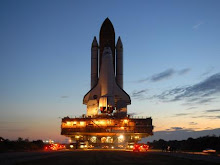CBSE - SCIENCE
X – SECTION – A
PHYSICS AND CHEMISTRY
1. What is meant by the statement, “ potential difference between points A and B in an electric field is 1 volt.
2. Refractive index of media A, B, C and D are
i. A 1.33
ii. B 1.52
iii C 1.44
iv D 1.65
In which of the four media is the speed of light (i) maximum (ii) minimum.
3.What sign convention has been given to the focal length of a convex mirror
4.During summer season, a milkman usually adds a very small amount of baking soda to fresh milk. Give one reason.
5.What is the colour of phenolphthalein indicator in an acidic solution.
6.Why does magnesium powder react much more rapidly than magnesium ribbon with dil.H2SO4
7.A student performs an experiment to study the magnetic effect of current around a current carrying straight conductor. He reports that the direction of deflection of the north pole of a compass needle kept at a given point near the conductor remains unaffected even when the terminals of the battery sending current in the wire are inter changed.for a given battery, the degree of deflection of a N-pole decreases when the compass is kept at a point farther away from the conductor.Which of the above observations of the student is incorrect and why?
8. What is the meaning of the term ‘frequency’ of an alternating current?What is value in India?
Why is an alternating current considered to be advantageous over direct current for long
range transmission of electric energy?
9. What are the two major shortcomings of Mendeleev’s periodic table? How have
these been removed in the modern periodic table?
10.Give reasons for the following.
i) Metals are regarded as electropositive elements.
ii) Articles made of Aluminium donot corrode even though Al is an active metal.
11.Draw the electron dot structures of ethane, ethene, and ethyne molecule.
12. Give reasons for the following.
Why do unsaturated hydrocarbons show addition reactions.
Why is the conversion of ethanol to ethanoic acid an oxidation reaction.
Alcohol supplied for industrial purposes is mixed with CuSO4
13. i. State Ohm’s law.
ii. Draw a schematic diagram of the circuit for studying ohm’s law
A wire of length L and resistance R is stretched so that its length is doubled and area of cross section is halved. How will its
i. resistance change, ii. Resistivity change.
14. A 14 year student is not able to see clearly the questions written on the black board placed at a distance of 5m from him.
Name the defect of vision he is suffering from.
With the help of labeled ray diagrams show how this defect can be corrected.
Name the type of lens used to correct this defect
15. Explain the construction and working of a electric motor.
OR
Give reasons for the following
:
i)The sky appears to be blue during day time to a person on earth.
ii) The sky near the horizon appears to have a reddish heu at the time of sunset and sunrise
iii) The sky appears dark instead of blue to an astronaut.
iv) The stars appears to twinkle
(v) The planets do not twinkle.
16. You are given the following materials:
Iron nails
Copper sulphate solution
Barium chloride solution
Copper powder
Ferrous sulphate crystals
Quick Lime
Identify the type of chemical reaction taking place when.
(a) Barium chloride solution is mixed with copper sulphate solution and a white
precipitate is observed.
(b) On heating copper powder in air in a China dish, the surface of copper powder
turns black.
(c) On heating green coloured ferrous sulphate crystals, reddish brown solid is left and smell of a gas having odour of burning sulphur is experienced.
(d) Iron nails when left dipped in blue copper sulphate solution become brownish in colour and the blue colour of copper sulphate fades away.
(e) Quick lime reacts vigorously with water releasing a large amount of heat.
OR
Four metals A, B, C and D are, in turn, added to the following solutions one by one. The observations made are tabulatd below:
Answer the following questions based on above information.
(i) Which is the most active metal and why? (ii) What would be observed if B is added to a solution of copper (II) sulphate and why?
(iii) Arrange the metals A, B, C and D in order of increasing reactivity.
(iv) Container of which metal can be used to store both zinc sulphate solution and
silver nitrate solution.
(v) Which of the above solutions can be easily stored in a container made up of any of
these metals?
